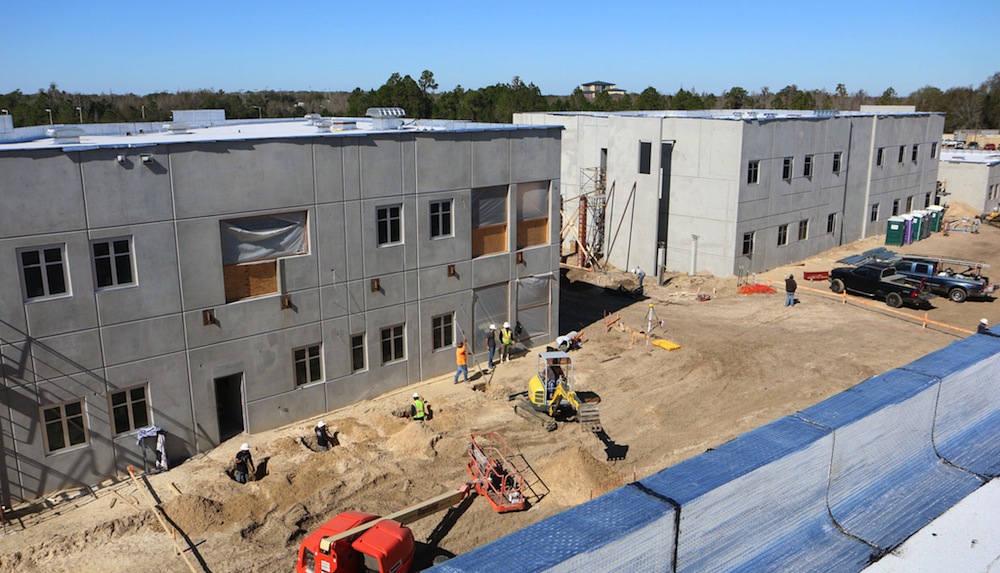The nation faces a projected annual shortfall of $46 billion in school funding, according to The State of Our Schools: America’s K-12 Facilities report, by the Center for Green Schools at the U.S. Green Building Council (USGBC), the 21st Century School Fund, and the National Council on School Facilities.
The report features in-depth state-by-state analysis of investment in school infrastructure and a perspective on 20 years of school facility investment nationwide. It also makes recommendations for investments, innovations, and reforms to improve learning environments in all U.S. public schools.
“One out of every six people in the U.S. spends each day in a K-12 public school classroom, yet there is very little oversight over America’s public school buildings,” said Rick Fedrizzi, CEO and founding chair, USGBC. “It is totally unacceptable that there are millions of students across the country who are learning in dilapidated, obsolete and unhealthy facilities that pose obstacles to their learning and overall well-being. U.S. public school infrastructure is funded through a system that is inequitably affecting our nation’s students and this has to change.”
“The data on funding school infrastructure paints a clear picture of the importance of a national conversation regarding the way improvements are funded,” said Mike Rowland, president, National Council on School Facilities and director of Facilities Services for the Georgia Department of Education. “The conversation surrounding student achievement must also include a component addressing the places where our children learn.”
To download the full State of Our Schools: America’s K-12 Facilities report, and to find out the conditions in your local school district, visit here.
Related Stories
| Aug 16, 2014
The science of learning: Designing the STEM learning facilities of the future
New technology and changing pedagogies are influencing how to best teach a generation of learners who have never known a world without smartphones or tablets, writes HOK's Kimberly Robidoux.
| Aug 14, 2014
8 do's and don'ts for completing an HVAC life cycle cost assessment
There are many hurdles to overcome when completing a life cycle cost assessment. RMF Engineering’s Seth Spangler offers some words of advice regarding LCCAs.
| Aug 14, 2014
Life cycle cost analysis using energy modeling
A life cycle cost analysis helps a school district decide which HVAC system to use in $198 million worth of future building projects.
| Aug 13, 2014
Campus UX: Why universities should be creating 'branded environments' on campus
When most colleges and universities consider their brands, they rarely venture beyond the design and implementation of a logo, writes Gensler Design Director Brian Brindisi.
| Aug 12, 2014
First look: Calatrava's futuristic Main Building opens at Florida Polytechnic University
The $60 million structure is wrapped in a bright-white, aluminum pergola for dramatic effect and solar shading.
| Aug 8, 2014
Government Sector Giants: Public-sector construction slow, but stirring [2014 Giants 300 Report]
Improving energy performance of existing properties through targeted upgrades and large-scale reconstruction continues to be a federal priority, according to BD+C's 2014 Giants 300 Report.
| Aug 5, 2014
K-12 School Sector Giants: Pent-up demand finally produces movement in schools market [2014 Giants 300 Report]
After a long period of anemic performance, with growth mostly driven by renovations and additions, the K-12 sector is showing renewed interest in new construction, according to BD+C's 2014 Giants 300 Report.
| Jul 28, 2014
Reconstruction market benefits from improving economy, new technology [2014 Giants 300 Report]
Following years of fairly lackluster demand for commercial property remodeling, reconstruction revenue is improving, according to the 2014 Giants 300 report.
| Jul 28, 2014
Reconstruction Sector Construction Firms [2014 Giants 300 Report]
Structure Tone, Turner, and Gilbane top Building Design+Construction's 2014 ranking of the largest reconstruction contractor and construction management firms in the U.S.
| Jul 28, 2014
Reconstruction Sector Engineering Firms [2014 Giants 300 Report]
Jacobs, URS, and Wiss, Janney, Elstner top Building Design+Construction's 2014 ranking of the largest reconstruction engineering and engineering/architecture firms in the U.S.














